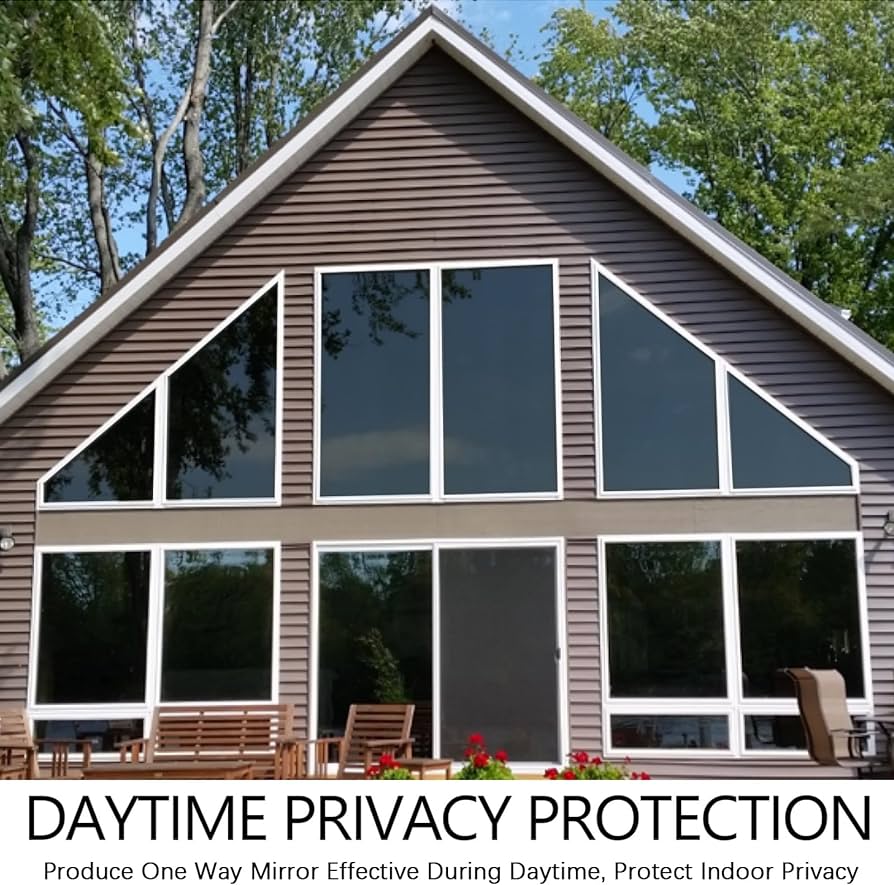Residential Window Tint: Improve Comfort and Minimize Glow Indoors
Residential Window Tint: Improve Comfort and Minimize Glow Indoors
Blog Article
Exactly How Residential Home Window Tinting Boosts Your Home's Power Effectiveness
Residential home window tinting provides an engaging service for property owners looking for to boost energy efficiency within their living areas. By applying specialized films to home windows, it effectively reduces heat transfer, therefore supporting indoor temperatures and reducing the requirement for too much heating or cooling.
Understanding Home Window Tinting
Recognizing window tinting is vital for home owners looking for to boost both comfort and power performance in their living spaces. Residential Window Tint. Window tinting entails the application of a thin movie to the interior or outside surface of glass home windows. This film can substantially modulate the quantity of sunlight and heat that goes into a home, therefore affecting interior environment conditions
There are various types of window tinting films offered, each with distinct buildings. Colored movies take in solar power, while reflective movies disperse it away from the glass surface. Ceramic films use an equilibrium of presence and warmth denial, making them a popular choice amongst property owners. The performance of window tinting is frequently gauged by its Visible Light Transmission (VLT) percent, which suggests exactly how much light can travel through the movie.
Advantages of Energy Performance
Window tinting not just boosts aesthetic appeals but additionally plays a significant duty in improving energy performance within household spaces. By reducing heat transfer with home windows, tinted movies produce an extra steady interior environment, which can cause significant decreases in energy intake for cooling and heating. This power performance equates into reduced energy costs, offering home owners with significant lasting financial savings.

In addition, window tinting improves the convenience of living areas. By reducing glare and obstructing unsafe UV rays, colored windows develop a more positive environment, which can bring about boosted health for residents. The protection against UV rays additionally assists preserve furniture and flooring from fading, adding to the long life of household products.
Just How Tinting Works
Tinting films operate through a mix of advanced products and technologies created to control the amount of solar power getting in a home. Mostly made up of polyester, these movies commonly integrate ceramic or metallic bits that absorb and reflect heat. This dual capability allows them to considerably decrease the penetration of ultraviolet (UV) rays and infrared radiation while allowing visible light to pass through.
The effectiveness of home window tinting is determined by its solar warmth gain coefficient (SHGC), which suggests how much solar power is transferred through the window. Lower SHGC worths are preferable as they signify better heat being rejected. Additionally, window tints can feature a variety of shades, allowing homeowners to tailor their aesthetic choices while improving power check effectiveness.
Moreover, these movies serve as a barrier, avoiding warm loss during colder months by showing interior warmth back right into the living room. This thermal insulation effect matches the air conditioning advantages acquired throughout warmer months, contributing to a well balanced indoor environment year-round. By handling solar power efficiently, household window tinting not just boosts convenience however likewise plays an essential function in reducing energy usage and lowering utility expenses.
Picking the Right Color

There are various kinds of home window movies offered, consisting of dyed, metalized, and ceramic. Ceramic movies provide outstanding heat control without endangering visibility and are very resilient, making them a preferred selection.
Noticeable light transmission (VLT) is another essential element, as it suggests the amount of all-natural light that can go through the tinted glass. Homeowners should pick a tint with a VLT that complements their illumination preferences while still offering sufficient glow decrease.
Additionally, assessing the solar warmth gain coefficient (SHGC) can help identify exactly how well a color can obstruct warmth from sunshine. A lower SHGC indicates better heat control, eventually boosting energy efficiency.
Installment and Upkeep Tips
Appropriate installation and maintenance are essential parts in taking full advantage of the advantages of domestic window tinting. To attain optimal results, it is a good idea to hire a certified professional for installation. This makes certain that the color is used correctly, staying clear of air bubbles, wrinkles, or misalignment that could jeopardize performance. Professionals additionally use specialized techniques and tools, which can improve the sturdiness and performance of the color.
Adhering to setup, upkeep is vital to lengthen the life of the home window film. It is recommended to wait at least 30 days before cleaning up the tinted windows to allow the sticky to treat fully.
In addition, normal examinations are beneficial. Look for any peeling or bubbling, which could indicate inappropriate setup or put on in time - Residential Window Tint. Attending to these issues quickly can prevent additional damages and keep energy performance. By sticking to these installment and maintenance pointers, home owners can guarantee their home window tinting continues to offer significant energy financial savings and convenience for years to come.
Conclusion
In conclusion, household home window tinting serves as an efficient option for boosting power effectiveness within homes. By lowering warmth transfer and blocking damaging UV rays, home window films contribute to decrease energy intake and boosted indoor comfort.
Window tinting involves the application of a slim movie to the interior or exterior surface of glass windows. By reducing warm transfer via home windows, tinted movies create a much more secure interior environment, which can lead to considerable decreases in power intake for heating and air conditioning.The efficiency of window tinting is measured by its solar warmth gain coefficient (SHGC), which shows just how much solar power is transmitted additional reading via the home window. By handling solar power properly, property home window tinting not just boosts comfort however additionally plays a vital role in reducing power usage and lowering energy bills.
By minimizing warm transfer and blocking unsafe UV rays, window films add to lower power intake and boosted indoor comfort.
Report this page